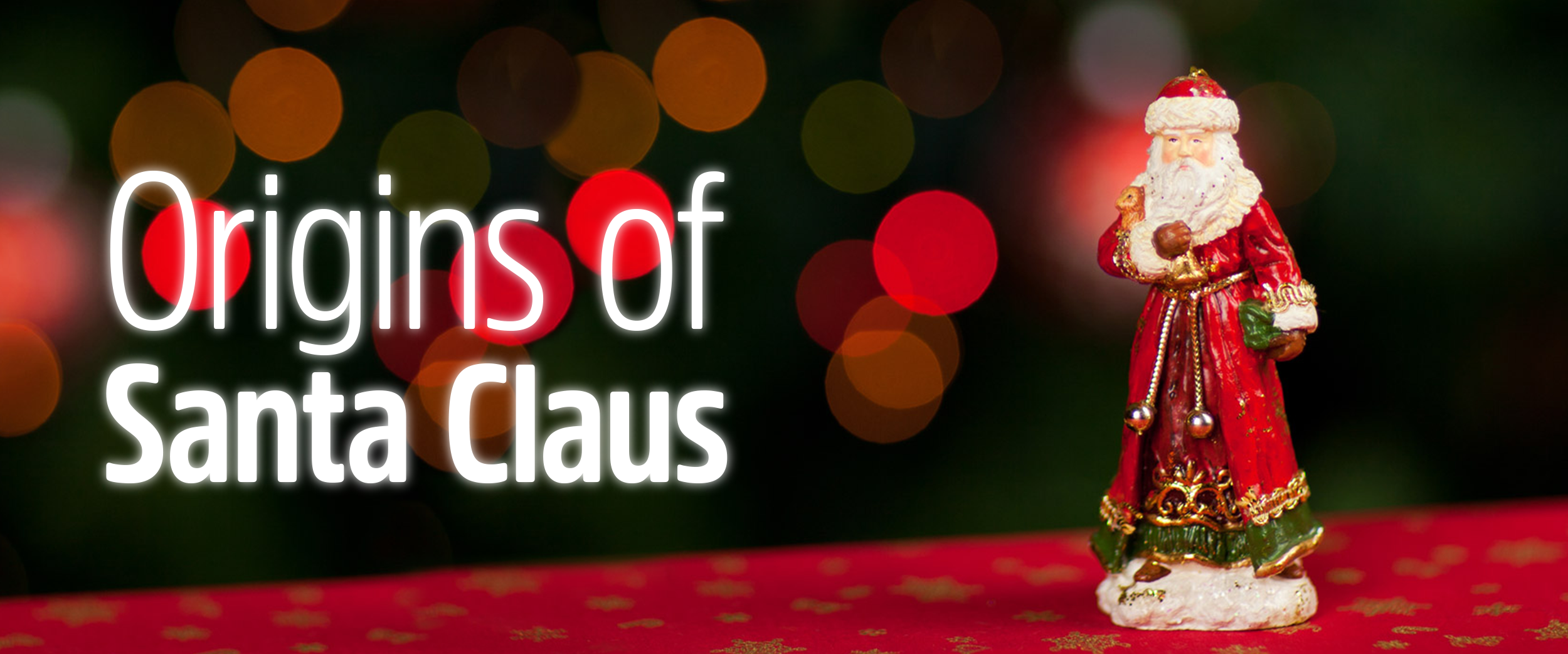 Most of us are familiar with the mainstream image of Santa Claus, with his reindeer, sleigh, and a country full of elves that love nothing more than to make presents for children. However, Saint Nicholas was not always the goofy bearded man we picture today, having gone through many facelifts since his humbler beginnings in the 4th century, a time when Saint Nicholas, otherwise known as Nicholas of Bari or Nicholas of Myra, lived.
Most of us are familiar with the mainstream image of Santa Claus, with his reindeer, sleigh, and a country full of elves that love nothing more than to make presents for children. However, Saint Nicholas was not always the goofy bearded man we picture today, having gone through many facelifts since his humbler beginnings in the 4th century, a time when Saint Nicholas, otherwise known as Nicholas of Bari or Nicholas of Myra, lived.
Humble beginnings
As a bishop in Myra, Turkey, he was known for his kindness towards children. In one of the most famous tales about Saint Nicholas, he saved three young women from prostitution by providing them with gold in the form of a dowry, so they could get married. Another story had the bishop resurrecting three boys who had been killed by an inn keeper. His reputation spread throughout the world, including Russia and Greece, who named him their patron saint.1
Rise to fame
Hundreds of years later, Saint Nicholas was recognized as someone who brought gifts to children on December 6, the day of his death. However, by around 1500, the time of protestant reformation, Saint Nicholas had fallen out of favor in most parts of Europe, except for the Netherlands.2 There, he was called Sinter Klaas, with the name making its way into Americana in the 1770s in a New York newspaper article reporting on Dutch families celebrating the anniversary of Sinter Klaas’ death.3 Later, in 1809, Washington Irving—he of the Rip Van Winkle and The Legend of Sleepy Hollow fame—portrayed Saint Nicholas as a pipe-smoking gift-giver in his book, Knickerbocker’s History of New York. An anonymously written poem titled “The Children’s Friend” was written 12 years later, turning Santa Claus into a nonreligious gift-giving saint who wore fur and was propelled by a single reindeer. It was Clement Clarke Moore, an Episcopal minister, who associated the saint with Christmas in his poem to his children titled “A Visit from St. Nicholas” that was written for his six children but anonymously published the very next year. In it, Saint Nicholas is described as a plump old man with eight reindeer and a sleigh, an image that was elaborated upon by the political cartoonist Thomas Nast in 1862, combining native German traditions along with Moore’s idea of Saint Nicholas to create today’s image of Santa Claus.2,4 This image took even greater precedence in American folklore as Coca Cola ran advertisements for 35 years, starting in the 1930s, using a cheerful Santa cajoling with elves and reindeer as a mainstream symbol for Christmas.4 While Rudolph the red-nosed reindeer started as a Christmas promotion for the Montgomery ward department store chain.
The darker side
The legend of Santa Claus wouldn’t be complete without the idea that kids who misbehave are punished in one form or another. While Santa limits himself to giving naughty kids lumps of coal, darker counterparts who have far less mercy than Santa exist in Europe. Though never as popular as Santa in the United States, the character of Krampus, a malevolent Christmas spirit with a ball and chain who hauls naughty kids to the underworld, was turned into a financially successful Hollywood film in 2015. While the name Krampus is based on the German word for claw (krampen), the beast is related to Norse mythology and shares features of other demonic figures from Greek mythology, such as satyrs and fauns. Krampus is supposed to appear the night before December 6, known as Krampusnacht, where he keeps unkindly children in check, though some iterations are festival-like, with drunken men dressing up as Krampus and pretend to chase people around in the streets.5
Where is he now?
So, where is Santa now? To kids, he’s most definitely working at the North Pole, furiously producing toys with his elves to give to children Christmas Eve, where he flies across the world on his sleigh, landing on rooftops and forcing his pudgy body down chimneys. However, no one really knows where the real Saint Nicholas is buried. Many believe that the bishop’s bones were brought to the crypt of the Basilica di San Nicola by Italian sailors in the 11th century, but Turkish archeologists claimed in 2017 that the remains are located beneath a church in Demre, Turkey, close to where the saint was born. Because the bones of Saint Nicholas are considered relics by the Catholic church, there has been fierce debate over who has the correct claim to his remains, though little proof has been shown on either side. Were remains to be found at either site, DNA sequencing could potentially match them with Saint Nicholas, as genomic sequencing has been previously used to identify the remains of other historical figures, like those of ancient Canaanites as well as the Georgian Queen Ketavan.6,7
Though we might never know where Saint Nicholas is buried, his image lives on as cheerful ol’ Saint Nick, making kids happy and spreading Christmas cheer throughout the world. So, from everyone here at GA, we wish you a very Merry Christmas, happy holidays, and a happy new year!
LabTAG by GA International is a leading manufacturer of high-performance specialty labels and a supplier of identification solutions used in research and medical labs as well as healthcare institutions.
References:
- Encyclopaedia Britannica. St. Nicholas: Bishop of Myra. https://www.britannica.com/biography/Saint-Nicholas. Published 2018.
- Handwerk B. Saint Nicholas to Santa: The Surprising Origins of Mr. Claus. National Geographic. https://news.nationalgeographic.com/news/2013/12/131219-santa-claus-origin-history-christmas-facts-st-nicholas/. Published 2017.
- History. Santa Claus. A&E Television Networks, LLC. https://www.history.com/topics/christmas/santa-claus. Published 2018.
- Petro B. What Is the Origin of Santa Claus? Huffington Post. https://www.huffingtonpost.com/quora/what-is-the-origin-of-san_b_6343482.html. Published 2017.
- Basu T. Who Is Krampus? Explaining the Horrific Christmas Devil. National Geographic. https://news.nationalgeographic.com/news/2013/12/131217-krampus-christmas-santa-devil/. Published 2017.
- Gibbens S. Could the Remains of Santa Claus Be in This Turkish Church? National Geographic. https://news.nationalgeographic.com/2017/10/santa-claus-st-nicholas-tomb-archaeology-turkey-spd/. Published 2017.
- Rai N, Taher N, Singh M, et al. Relic excavated in western India is probably of Georgian Queen Ketevan. Mitochondrion. 2014;14:1-6.


